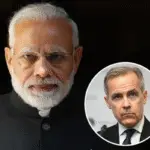Now Reading: Is Pet Insurance Worth It in India? This ₹45,000 Emergency Answers Everything
-
01
Is Pet Insurance Worth It in India? This ₹45,000 Emergency Answers Everything
Is Pet Insurance Worth It in India? This ₹45,000 Emergency Answers Everything

A Golden Retriever pet dog owner in Bengaluru just paid ₹45,000 for emergency surgery after their dog ate something toxic, and the experience has thousands of Indian pet parents frantically Googling “is pet insurance worth it in India?” While we love posting Instagram photos of our fur babies and buying them fancy toys, most pet owners in Indian cities are completely unprepared for the financial reality of veterinary healthcare that can easily cost lakhs over a pet’s lifetime.

Here’s the brutal truth nobody mentions when you’re adopting that adorable puppy: modern veterinary care in Indian metros has become as expensive as human healthcare, with diagnostic tests costing ₹2,000-₹8,000, routine surgeries running ₹15,000-₹50,000, and emergency treatments potentially exceeding ₹1 lakh. But here’s what’s even more shocking – pet insurance that could cover 80-90% of these costs is available for as little as ₹5,000-₹8,000 annually, yet less than 2% of Indian pet owners have it.
The most frustrating part? The Bengaluru dog owner who paid ₹45,000 out-of-pocket would have paid only ₹4,500 with insurance (after deductible), saving ₹40,500 on that single emergency. That’s more than five years of insurance premiums recovered from one incident.

The Real Cost of Routine Pet/ Veterinary Care in Indian Cities
Let’s start with the expenses that every pet owner will definitely face, regardless of emergencies or illnesses. Understanding baseline veterinary costs across Indian metros reveals why pet insurance makes financial sense even for “healthy” pets.
Annual Vaccination Schedule (Mandatory)
- Bangalore/Mumbai/Delhi NCR: ₹1,500-₹3,000 annually
- Pune/Hyderabad/Chennai: ₹1,200-₹2,500 annually
- Tier-2 cities: ₹800-₹1,800 annually
Vaccinations aren’t optional – they’re legally required in most municipalities and protect against diseases like rabies, distemper, and parvovirus. The cost varies based on imported versus Indian vaccines, clinic location, and whether house calls are needed.
Routine Health Check-ups
- Basic wellness exam: ₹500-₹1,500 per visit
- Blood work (CBC, biochemistry): ₹2,000-₹5,000
- Dental cleaning: ₹3,000-₹8,000
- Deworming (quarterly): ₹300-₹800 per dose
- Flea/tick prevention: ₹500-₹1,500 monthly
A responsible pet owner doing proper preventive care easily spends ₹15,000-₹25,000 annually just on routine wellness, before any illness or emergency occurs. These costs are often excluded from insurance coverage (focusing instead on illness and accidents) but understanding them provides context for total pet healthcare budgets.
Diagnostic Testing When Issues Arise
- X-rays: ₹1,500-₹4,000 per image
- Ultrasound: ₹2,500-₹6,000
- CT scan: ₹8,000-₹15,000
- MRI: ₹15,000-₹25,000
- Blood culture: ₹3,000-₹7,000
- Urine analysis: ₹500-₹1,500
The diagnostic costs shock most first-time pet owners because they’re comparable to human healthcare costs despite pets not having health insurance as standard practice. A simple diagnostic workup for unexplained symptoms can easily cost ₹8,000-₹15,000 before treatment even begins.
The Emergency Veterinary Costs That Devastate Budgets
Emergency situations reveal the true financial risk of pet ownership in Indian cities. Unlike routine care that can be budgeted for, emergencies strike without warning and demand immediate payment with no financing options at most clinics.
Common Emergency Scenarios and Real Costs
Foreign Body Ingestion (Dogs eating toys, bones, cloth):
- Diagnosis (X-rays, ultrasound): ₹4,000-₹8,000
- Endoscopy removal: ₹15,000-₹30,000
- Surgical removal: ₹25,000-₹50,000
- Post-operative care: ₹5,000-₹15,000
- Total: ₹30,000-₹70,000
Toxicity (Rat poison, chocolate, cleaning chemicals):
- Emergency consultation: ₹1,500-₹3,000
- Blood tests, IV fluids: ₹5,000-₹12,000
- Hospitalization (2-3 days): ₹8,000-₹20,000
- Antidotes/medications: ₹3,000-₹10,000
- Total: ₹17,000-₹45,000
Road Accidents (Common in urban areas):
- Emergency stabilization: ₹5,000-₹15,000
- Imaging (X-ray, CT): ₹5,000-₹15,000
- Fracture surgery: ₹20,000-₹60,000
- ICU care (if needed): ₹10,000-₹30,000 per day
- Total: ₹40,000-₹120,000+
These aren’t worst-case scenarios – they’re common emergencies that urban pet owners face regularly. Every vet clinic in Bangalore, Mumbai, or Delhi sees multiple such cases weekly.
The Chronic Illness Costs That Accumulate Over Years
Beyond emergencies, chronic conditions that develop as pets age create ongoing financial commitments that can strain household budgets for years.
Diabetes Management (Common in overweight pets)
- Initial diagnosis: ₹8,000-₹15,000
- Monthly insulin: ₹1,500-₹3,000
- Glucose monitoring supplies: ₹500-₹1,000 monthly
- Quarterly vet checks: ₹2,000-₹4,000
- Annual cost: ₹25,000-₹45,000 for life
Kidney Disease (Affects 30% of senior pets)
- Diagnosis: ₹10,000-₹20,000
- Specialized diet: ₹3,000-₹5,000 monthly
- Medications: ₹2,000-₹4,000 monthly
- Regular blood work: ₹5,000-₹8,000 quarterly
- IV fluid therapy (as needed): ₹3,000-₹8,000 per session
- Annual cost: ₹70,000-₹120,000
Cancer Treatment (Increasing diagnosis rate)
- Biopsy and staging: ₹15,000-₹30,000
- Chemotherapy per session: ₹8,000-₹20,000
- Radiation (if available): ₹50,000-₹150,000 total
- Pain management: ₹3,000-₹8,000 monthly
- Total treatment: ₹150,000-₹400,000+
The financial burden of chronic illness often forces impossible decisions between pet welfare and family finances, particularly for middle-class families where ₹50,000-₹100,000 annual medical costs represent significant portions of household income.
The Pet Insurance Landscape in India 2025
Pet insurance in India remains relatively new but has expanded significantly as veterinary costs have risen and pet ownership has increased in urban areas. Understanding available options helps determine whether insurance makes financial sense for your situation.
Major Pet Insurance Providers in India
New India Assurance – Pet Insurance
- Coverage: ₹50,000-₹200,000 annually
- Premium: ₹4,000-₹12,000 annually
- Covers: Accidents, illnesses, surgeries, hospitalization
- Excludes: Pre-existing conditions, routine wellness, breed-specific hereditary issues
- Claim process: Reimbursement model
Bajaj Allianz – Pet Care Insurance
- Coverage: ₹100,000-₹300,000 annually
- Premium: ₹6,000-₹15,000 annually
- Covers: Medical emergencies, third-party liability, death benefits
- Excludes: Vaccination, grooming, behavioral issues
- Claim process: Cashless at network clinics
Future Generali – Pet Insurance
- Coverage: ₹75,000-₹250,000 annually
- Premium: ₹5,000-₹14,000 annually
- Covers: Illness, accidents, alternative therapies
- Excludes: Dental (unless accident-related), cosmetic procedures
- Claim process: Mixed cashless/reimbursement
The insurance landscape is evolving, with more providers entering the market and coverage options expanding. However, current penetration remains under 2% of pet-owning households, primarily due to lack of awareness rather than availability issues.
The Insurance Cost-Benefit Analysis for Different Scenarios
Whether pet insurance makes financial sense depends on multiple factors including pet age, breed, health history, location, and your financial capacity to handle unexpected veterinary costs.
Young Healthy Pet (Age 1-3 years)
Annual insurance premium: ₹6,000-₹8,000 Likely annual vet costs without insurance: ₹3,000-₹8,000 (routine care) Emergency risk: Low but catastrophic if occurs
Insurance recommendation: Moderate. Main benefit is catastrophic coverage for rare but expensive emergencies. Over 10 years, might pay ₹70,000 in premiums versus ₹50,000 in actual vet bills, but the single ₹60,000 emergency fully justifies the cost.
Middle-Aged Pet (Age 4-7 years)
Annual insurance premium: ₹8,000-₹12,000 Likely annual vet costs without insurance: ₹8,000-₹20,000 Emergency/illness risk: Moderate and increasing
Insurance recommendation: Strongly recommended. This age range sees increasing health issues before pre-existing condition exclusions become problematic. Insurance purchased during healthy years covers conditions that develop later.
Senior Pet (Age 8+ years)
Annual insurance premium: ₹12,000-₹18,000 (if accepted) Likely annual vet costs without insurance: ₹25,000-₹80,000+ Emergency/illness risk: High
Insurance recommendation: Highly recommended if purchasable, but many providers exclude senior pets or don’t cover pre-existing conditions. Insurance should ideally be purchased before senior years when acceptance is easier and coverage is broader.
The Breed-Specific Cost Considerations
Certain breeds face predictable health issues that dramatically affect lifetime veterinary costs, making insurance particularly valuable for high-risk breeds.
High Veterinary Cost Breeds
Labrador/Golden Retrievers:
- Hip dysplasia surgery: ₹50,000-₹120,000
- Obesity-related issues: ₹20,000-₹50,000 annually
- Skin allergies: ₹15,000-₹30,000 annually
German Shepherds:
- Hip/elbow dysplasia: ₹60,000-₹150,000
- Digestive issues: ₹10,000-₹40,000 annually
- Neurological problems: ₹30,000-₹100,000
Pugs/Bulldogs/French Bulldogs:
- Breathing problems (BOAS surgery): ₹40,000-₹100,000
- Eye conditions: ₹20,000-₹80,000
- Skin fold infections: ₹8,000-₹25,000 annually
Persian Cats:
- Respiratory issues: ₹15,000-₹50,000
- Kidney disease: ₹70,000-₹120,000 annually
- Eye problems: ₹20,000-₹60,000
Breed-specific insurance considerations involve checking whether hereditary conditions common to your breed are covered or excluded, as some policies specifically exclude breed-typical issues that are statistically likely.
The Hidden Costs of Pet Ownership Beyond Veterinary Care

While this article focuses on healthcare costs, understanding total pet ownership expenses provides context for whether pet insurance premiums fit within your pet budget.
Annual Non-Medical Pet Expenses
Food (quality commercial diet):
- Small dogs/cats: ₹18,000-₹30,000 annually
- Medium dogs: ₹30,000-₹50,000 annually
- Large dogs: ₹50,000-₹80,000 annually
Grooming:
- Basic grooming: ₹500-₹1,500 monthly
- Professional grooming: ₹1,500-₹4,000 monthly
- Annual: ₹18,000-₹48,000
Training (if needed): ₹10,000-₹30,000 for basic obedience
Pet supplies/toys: ₹5,000-₹15,000 annually
Pet boarding (when traveling): ₹500-₹1,500 per day
Understanding total costs helps evaluate whether adding ₹6,000-₹15,000 annual insurance premiums is financially feasible within your household budget.
The Alternative: Pet Emergency Savings Fund
For those who decide against pet insurance, financial planners recommend maintaining dedicated pet emergency savings to avoid choosing between pet welfare and family finances during crises.
Emergency Fund Strategy
Target amount: ₹50,000-₹100,000 (based on pet age and health) Monthly savings: ₹4,000-₹8,000 until target reached Time to full funding: 12-15 months
The emergency fund approach provides flexibility to use funds for any pet-related expense including items not covered by insurance (behavioral training, routine dental care, specialized diets). However, it requires discipline to maintain the fund and not raid it for non-emergency expenses.
The main risk with self-insurance is timing – a major emergency in year one before the fund is established can create financial crisis, whereas insurance coverage begins immediately upon purchase.
The Regional Variation in Veterinary Costs
Veterinary care costs vary significantly across Indian cities, affecting both out-of-pocket expenses and insurance value proposition.
Metropolitan City Premium (Bangalore, Mumbai, Delhi NCR)
- Higher rent and operational costs for clinics
- More specialist veterinarians with higher fees
- Advanced diagnostic equipment (CT, MRI) available
- Emergency 24/7 services widely available
- Cost premium: 30-50% above tier-2 cities
Tier-2 City Advantages (Pune, Jaipur, Kochi, Indore)
- Lower operational costs reflected in fees
- Fewer specialists but adequate general practice
- Limited advanced diagnostics (may require referral to metros)
- Emergency services less reliable
- Cost advantage: 25-40% below metro areas
The regional variation affects insurance value differently – lower baseline costs in tier-2 cities mean lower annual premiums but also less dramatic cost-saving benefits, while metro pet owners see more significant savings from insurance due to higher treatment costs.
The Claim Process Reality That Frustrates Policy Holders
Understanding pet insurance claim processes prevents disappointment and helps manage expectations about how coverage works in practice.
Common Claim Frustrations
Reimbursement delays: 30-90 days from claim submission to payment Pre-approval requirements: Some procedures need insurance approval before treatment Documentation burden: Detailed medical records, prescriptions, bills required Claim rejection rates: 15-25% of claims rejected for various reasons Co-pays and deductibles: ₹2,000-₹10,000 out-of-pocket per claim even with insurance
The claim process requires organized record-keeping and patience with bureaucracy. Pet owners accustomed to immediate cashless healthcare for themselves often find pet insurance claim processes frustrating.
However, providers are improving – some now offer cashless treatment at network clinics and mobile apps for claim submission and tracking.
The pet healthcare cost crisis in Indian cities represents an overlooked financial planning challenge for the millions of households that have adopted pets in recent years. While social media celebrates pet parenting through cute photos and videos, the sobering financial reality involves potential six-figure veterinary expenses that can strain middle-class family budgets.
Animal insurance offers one solution, trading predictable annual premiums (₹6,000-₹15,000) for protection against catastrophic costs (₹30,000-₹150,000+), but currently reaches under 2% of pet owners primarily due to awareness gaps rather than availability issues. The alternative – maintaining robust pet emergency savings – provides flexibility but requires financial discipline and leaves families vulnerable to early unexpected costs.
The Bengaluru dog owner’s ₹45,000 emergency surgery bill that sparked this analysis represents just one data point in a growing trend: urban pet ownership in India now involves financial commitments comparable to adding another dependent to the family, requiring serious planning and either insurance coverage or substantial emergency savings.
Your neighbor posting adorable puppy photos on Instagram probably hasn’t considered these costs yet, but they will – typically during their first expensive vet visit when the cure little furball needs emergency care and the bill exceeds their monthly salary. The question isn’t whether significant veterinary expenses will occur, but whether you’ll be financially prepared when they do.
Frequently Asked Questions:
How much does pet insurance cost in India in 2025? Pet insurance in India costs ₹4,000-₹18,000 annually depending on pet age, breed, coverage amount, and provider. Young healthy pets (age 1-3) typically pay ₹6,000-₹8,000 annually, middle-aged pets (4-7 years) pay ₹8,000-₹12,000, while senior pets (8+ years) face ₹12,000-₹18,000 premiums if accepted. Major providers include New India Assurance, Bajaj Allianz, and Future Generali with coverage ranging from ₹50,000 to ₹300,000 annually.
What do veterinary emergencies actually cost in Indian cities? Common veterinary emergencies in Indian metros cost: foreign body removal surgery ₹30,000-₹70,000, toxicity treatment ₹17,000-₹45,000, accident-related fracture surgery ₹40,000-₹120,000, and chronic illness management ₹25,000-₹120,000 annually. Routine diagnostic tests alone cost ₹2,000-₹8,000 before treatment begins. These costs vary by city, with Bangalore/Mumbai/Delhi running 30-50% higher than tier-2 cities.
Is pet insurance worth it compared to maintaining an emergency savings fund? Pet insurance makes most sense for: catastrophic coverage against rare but expensive emergencies (₹50,000-₹150,000), middle-aged pets before pre-existing conditions develop, and high-risk breeds prone to specific health issues. Emergency savings funds provide more flexibility for routine care and uncovered expenses but require ₹50,000-₹100,000 in reserves and leave families vulnerable to early emergencies before funds are established. Insurance costs ₹6,000-₹15,000 annually versus potential ₹40,000+ emergency savings.
What doesn’t pet insurance cover in India? Pet insurance typically excludes: pre-existing conditions (anything diagnosed before policy purchase), routine wellness care (vaccinations, regular check-ups, dental cleaning), breed-specific hereditary conditions common to your pet’s breed, behavioral training or therapy, grooming, cosmetic procedures, and conditions developed during waiting periods (30-90 days after purchase). Coverage focuses primarily on unexpected illness, accidents, emergency surgeries, and hospitalization.
Which dog and cat breeds have the highest veterinary costs in India? High-cost breeds include: Labrador/Golden Retrievers (hip dysplasia ₹50,000-₹120,000, obesity issues ₹20,000-₹50,000 annually), German Shepherds (joint problems ₹60,000-₹150,000), Pugs/Bulldogs (breathing surgery ₹40,000-₹100,000, eye conditions ₹20,000-₹80,000), and Persian Cats (kidney disease ₹70,000-₹120,000 annually). These breeds benefit most from insurance as their predictable health issues create substantial lifetime veterinary expenses that insurance helps manage.


















